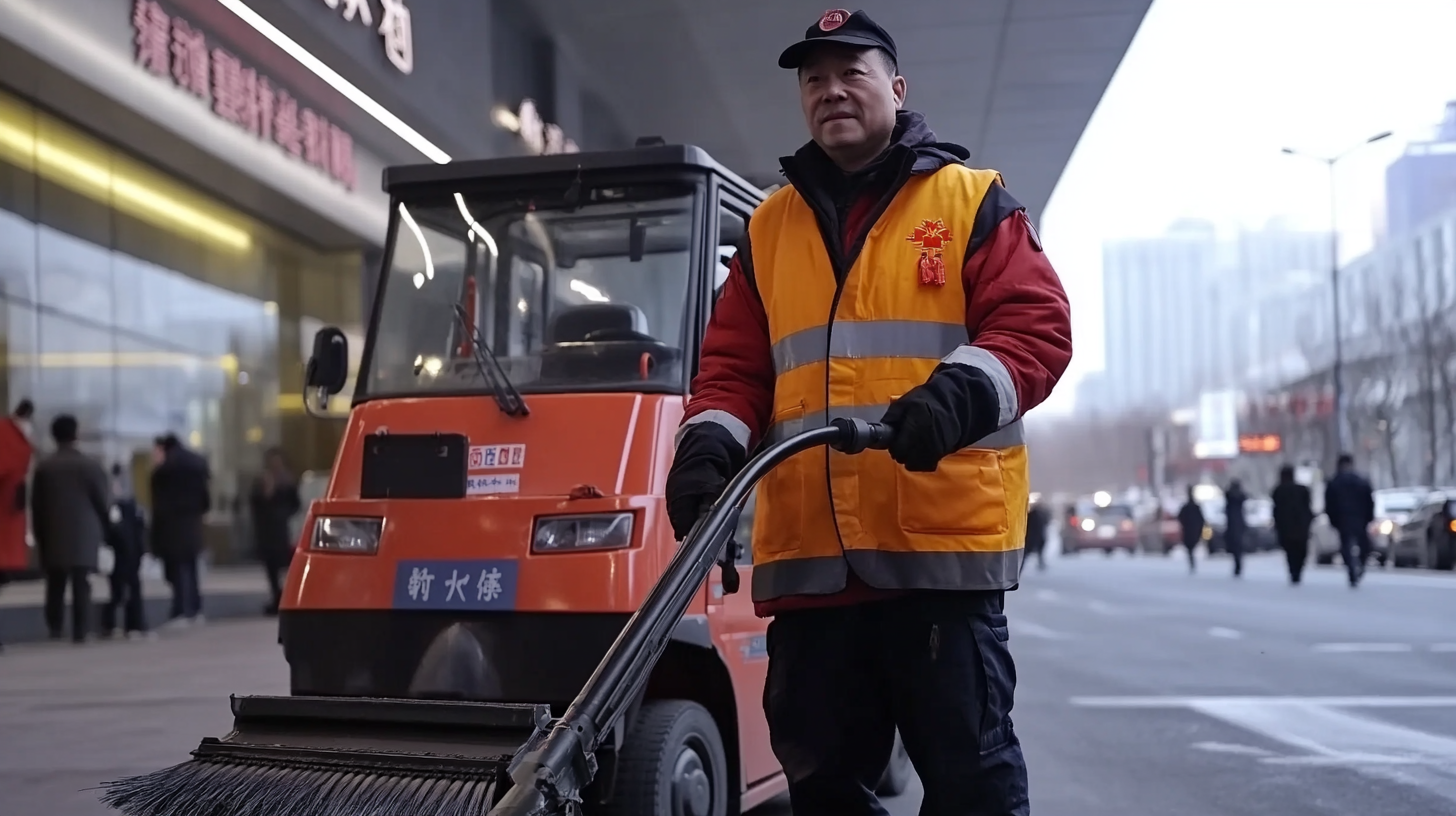Leave Your Message
In recent years, the global economic landscape has been significantly affected by the imposition of tariffs, with the United States and China locking horns in a trade war that has reshaped many industries. However, amid these challenges, China's vacuum sweeper industry has demonstrated remarkable resilience and growth. This surge can be attributed to several factors, including innovation, competitive pricing, and an expanding domestic market. As American tariffs increase the cost of imports, many companies are turning to Chinese manufacturers for affordable and high-quality vacuum sweepers. This blog will explore how the vacuum sweeper sector not only persists but thrives despite the adversities posed by US-China trade tensions, highlighting the strategies that have enabled it to flourish in a highly competitive environment. Join us as we delve into the dynamics of this intriguing industry that continues to sweep away the obstacles in its path.

China's vacuum sweeper industry has showcased remarkable resilience in the face of US-China tariff challenges. As tariffs on Chinese goods have increased, manufacturers have had to adapt quickly, redefining their strategies to maintain their foothold in the global market. This adaptability has not only involved optimizing production processes but also diversifying the supply chain and exploring alternative markets that are less affected by trade tensions.
Moreover, innovation has played a crucial role in bolstering the industry’s strength. Companies are investing in research and development to create advanced vacuum sweeping technology that meets evolving consumer demands. By focusing on efficiency and sustainability, these manufacturers are not only addressing domestic needs but also positioning themselves favorably in international markets. The combination of agility in management and a strong commitment to technological advancement has allowed China’s vacuum sweeper industry to not just survive but thrive amidst tariff turmoil.
China's vacuum sweeper industry is emerging as a significant player in the global cleaning appliance market, especially amid the complexities introduced by US-China tariff challenges. With the global vacuum cleaner market projected to grow from USD 44.24 billion in 2023 to USD 74.98 billion by 2030, at a compound annual growth rate (CAGR) of 7.8%, the domestic market is not lagging behind. The influx of innovation, consumer demand for smart cleaning solutions, and competitive pricing are propelling the growth of this sector in China.
The trajectory of the cleaning appliance industry globally indicates a shift towards more sophisticated, energy-efficient, and user-friendly devices. In China, the local market is characterized by a robust supply chain and rapid adaptation to consumer preferences. As the tech-savvy population increasingly opts for automated and intelligent cleaning solutions, domestic manufacturers are responding with a range of products that incorporate advanced technologies, driving further market expansion. With strong growth prospects and evolving consumer demands, investors are keenly eyeing China's vacuum sweeper market as a fertile ground for opportunities.
This chart illustrates the revenue growth of China's vacuum sweeper market from 2018 to 2023, showing a steady increase in revenue amid tariff challenges with the US.
The US-China tariffs have significantly reshaped the dynamics of manufacturing and exports within the vacuum sweeper industry. According to a report by Statista, the global vacuum cleaner market was valued at approximately $12 billion in 2021 and is projected to grow steadily, despite the challenges posed by trade tensions. However, the tariffs imposed by the U.S. government on Chinese goods, including vacuum sweepers, have prompted manufacturers to adapt quickly, altering their strategies to maintain market competitiveness.
In response to the tariffs, many Chinese manufacturers have sought to innovate and improve their operational efficiencies. A study from the China Association of Cleaning Industry noted that in 2022, the production capacity of vacuum sweepers in China increased by 15%, attributed to advancements in automation and smart technology. This adaptation ensures that Chinese products remain appealing to international markets, despite the added costs incurred from tariffs. Furthermore, manufacturers are increasingly looking to diversify their supply chains, exploring other markets and materials to mitigate tariff impacts, which underscores an evolving landscape driven by necessity and resilience.
| Year | Export Value (Million USD) | Tariff Rate (%) | Manufacturing Growth Rate (%) | Market Share (%) |
|---|---|---|---|---|
| 2018 | 1200 | 10 | 7.5 | 30 |
| 2019 | 1350 | 15 | 8.0 | 32 |
| 2020 | 1450 | 20 | 9.0 | 35 |
| 2021 | 1600 | 25 | 10.5 | 38 |
| 2022 | 1750 | 30 | 11.3 | 40 |
In recent years, China's vacuum sweeper industry has surged ahead, primarily due to an unwavering commitment to innovation and technology. Chinese manufacturers have embraced advanced robotics, artificial intelligence, and IoT integration, pushing the boundaries of traditional cleaning methods. These innovations not only enhance operational efficiency but also cater to the evolving demands of consumers for smarter, more effective cleaning solutions.
One notable advancement is the incorporation of autonomous navigation systems in vacuum sweepers. This technology allows devices to map their surroundings, optimize cleaning paths, and avoid obstacles, making them ideal for both residential and commercial applications. Furthermore, manufacturers are focusing on eco-friendly designs, utilizing sustainable materials and energy-efficient components. This shift not only addresses environmental concerns but also appeals to a growing market of environmentally conscious consumers. As a result, China's vacuum sweeper industry continues to thrive, demonstrating its resilience and adaptability in the face of international trade challenges.

Chinese manufacturers have emerged as formidable players in the vacuum sweeper industry, leveraging innovation and strategic investments to outperform their global rivals. According to a report from MarketsandMarkets, the global vacuum cleaner market is projected to reach $21 billion by 2026, with automated and robotic solutions leading the growth. China's leading manufacturers have not only captured a significant share of this market but have also set the pace with advanced technologies and cost-effective production methods.
Chinese companies, such as Xiamen Eclean and Shenzhen DHC, have focused on R&D, resulting in products that boast superior cleaning capabilities, energy efficiency, and user-friendly designs. A report from Statista indicates that the market share of Chinese vacuum cleaner exports rose to 30% in the last year, highlighting their competitive edge against Western brands. By prioritizing smart technology integration, these manufacturers are able to offer features like app connectivity and automated scheduling, which are increasingly in demand.
**Tip:** To stay competitive, global players should consider forming partnerships with innovative Chinese firms to access new technologies and production techniques.
Moreover, Chinese manufacturers benefit from a robust supply chain and lower labor costs, allowing them to price their products competitively. This strategy not only attracts price-sensitive consumers but also enables them to invest in marketing campaigns to enhance brand visibility globally.
**Tip:** Investing in customer service and after-sales support can help establish strong brand loyalty for companies looking to enter the Chinese market.

